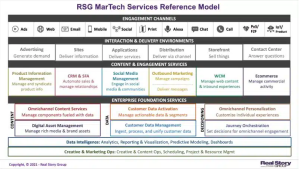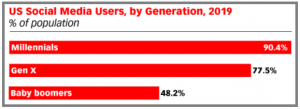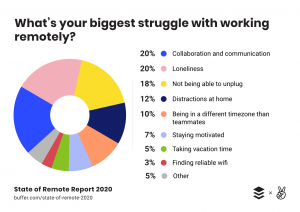Some vendors lose the trust of customers through poor decisions. But some don’t seem to be trying to earn it to begin with.

Trust in business is not quite the same as trust in our personal lives. I think everyone recognizes that.
You’ll never trust Salesforce or HubSpot the way you trust your family or your best friend, and I think the people at those companies would whole-heartedly agree on that point.
When it comes to trust, the best a B2B tech vendor can hope for is to be where IBM stood when someone coined the phrase, “No one ever got fired for buying IBM.”
Trust, in this context, essentially boils down to: “The product is going to work and you aren’t going to get screwed over.” It’s not asking all that much.
But we are, as a culture, wired to mistrust our institutions like, say, the government or Google.
“Google?” you ask. “Google was one of the few tech brands that made the Morning Consult’s list of most trusted brands in 2024!”
You’re not wrong. Google did make a list dominated by CPG brands like Band-Aid, Kleenex, Lysol and Clorox. However, the top brands in Morning Consult’s report take a consumer perspective.
Consumers trust Google to deliver the right information. We experience this all the time when talking to our friends. “Thanks for settling that, Google. The Royals did, in fact, win the 1985 World Series.” (And the AI-generated responses from Google have only improved this experience for consumers.)
If you work in SEO or paid media, you have a B2B relationship with Google and likely have a more complex take on the brand.
Last month, a massive leak of documents surrounding Google’s search algorithm confirmed for many that comments by the company’s employees did not always jive with how the docs say the mysterious system operates. As a result, that industry is questioning how much it can trust what it hears from the company that quite literally controls their careers.
Social media, of course, amplifies everything. And when someone posts about their poor customer experience or some questionable action taken by a vendor, it travels the world in record time.
Posting about poor SaaS renewal experiences or what happens when you don’t renew with a vendor is now a pastime on LinkedIn.
How many times when a renewal comes up have you heard, “That SKU is no longer available”?
It’s as if SaaS apps are on a shelf somewhere and the cashier is getting an error when they try to scan the bar code. “That SKU is no longer available” means “brace yourself for a more expensive package.”
Failure to renew leads some customers to be shown the fine print in the contract they signed. This is where they learn that saying goodbye to a vendor is a lot like a marriage that ends in divorce. Few people enter the arrangement thinking about how expensive and ugly it might be at the end.
Just this week, the U.S. Federal Trade Commission sued Adobe over what the FTC said was a costly and complicated process for ending software subscriptions in the first year.
Speaking of Adobe and fine print, the non-lawyers on social media recently got in a twist over language in Adobe’s Terms of Service that said the company could see what it is you’re creating with its software.
This should not have been a surprise. The terms laid out examples of why this might be necessary. It could be useful for customer support or in case Adobe is served with a warrant. The provision was included in the terms for months before anyone raised a fuss on social media.
Adobe agreed to change the terms in response, but it wasn’t even the first time this spring that people questioned whether they could trust Adobe’s word.
Part of what’s going on here is the social media effect. But part of it is that brands must earn trust and too many aren’t doing that.
A MarTech.org Podcast I recorded in May with contributors Jay Mandel and Liam Maroney about why people are re-thinking B2B marketing took a somewhat unexpected turn when Jay and Liam brought up how many smaller B2B tech vendors were never built to develop a brand, earn trust or provide amazing customer experiences.
Instead, their founders were in it for the exit and the payout, not for the long haul, and it showed.
Growth at all costs leads to decisions that hurt customers. When mass layoffs hit profitable software vendors, customers pay a price. They have to transition to new customer success reps and account managers, eroding the relationship and trust they built with those people.
Vendors are built. Brands are built to last.
How do today’s B2B tech vendors establish and build trust with their customers and prospects? I don’t have an easy answer.
Companies are made up of humans, and humans are prone to errors. The good news is humans know that and will forgive some lapses or mistakes.
But maybe the answer lies in the same podcast episode with Jay and Liam, where the discussion turned toward brand vs. performance marketing.
If you’re building a company with a growth-at-all-costs attitude, you probably aren’t investing enough in your brand.
If you’re building a company just to sell it, you probably aren’t investing enough in your brand.
If you’re so concerned with measuring your bottom line that your marketing team is overwhelmingly built for performance marketing, you’re likely not investing enough in your brand.
Adobe and Google will survive what customers see as their lapses. Adobe, in fact, had its best quarter ever in Q2 of this year. Both Adobe and Google are heavily invested in their brands. Maybe that’s a coincidence, or maybe not.
After all, brand was all IBM had when people knew it was the safest bet in the business.
The post Will you ever trust a B2B tech vendor? appeared first on MarTech.
(7)
Report Post





